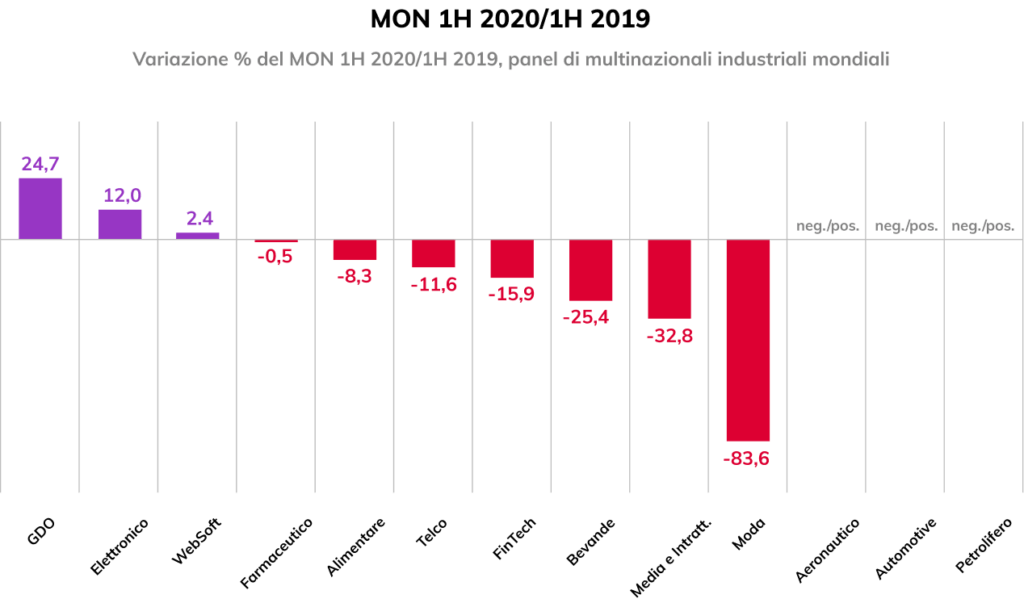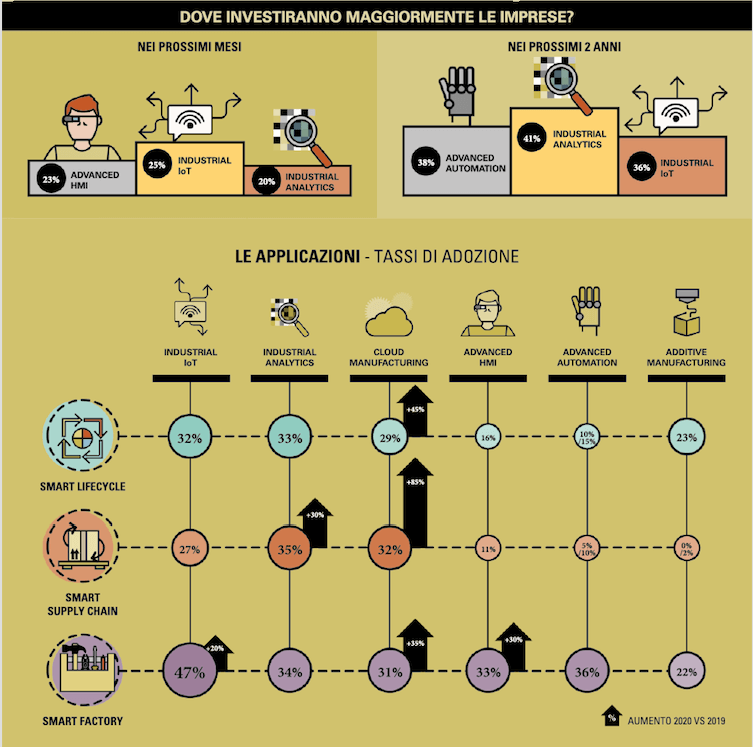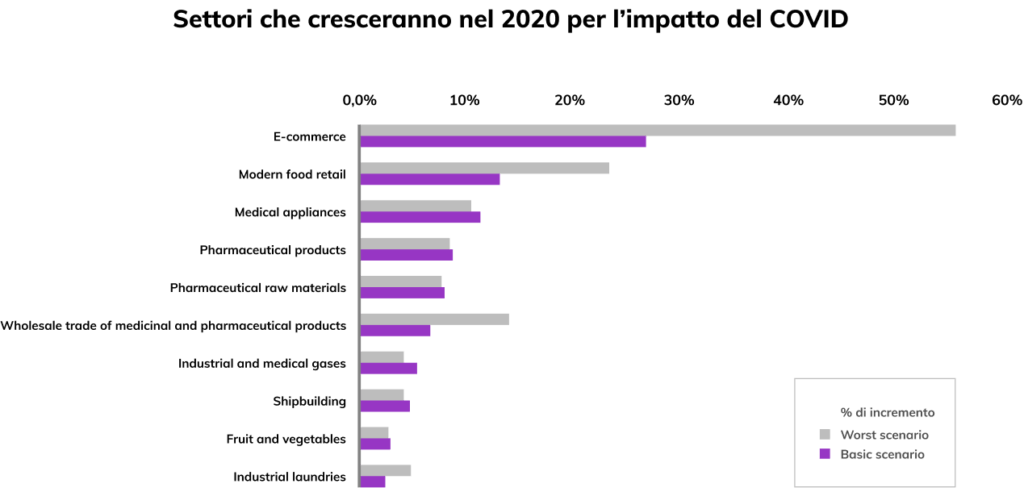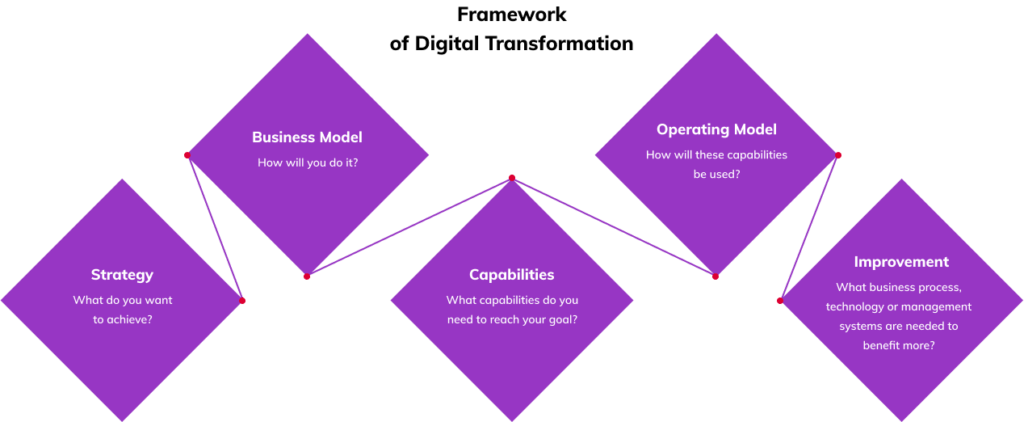HOW TO SAVE FASHION THANKS TO CORPORATE DIGITIZATION
Corporate digitization in fashion: what you need to know
Digital transformation, corporate digitalization, digital innovation… many definitions for a clear concept. A number of changes are taking place to improve business processes, encourage new ways of working and use digital working tools more and more at all levels. But why should all this affect fashion? Simply because the fashion area is the one that is paying most of all the effects of the COVID-19.
Just checking the contraction of the turnover of the major companies dealing clothing, footwear, home textiles, sports goods, leather goods and accessories we realize how they have have been penalized by the closure of commercial channels and the blocking of tourist flows. We can talk about a real crisis. The entire sector has lost more than 80% of net operating margin compared a year ago.
However, there is a good new: thanks to this contraction we can take advantage to change strategy, work on the advantage of digital data, simplify or even delete some habits, optimize the customer experience, testing its operational flexibility, developing new sources of income and new value ecosystems based on data or new digital processes. Especially those that were born from a path that leads to corporate digitalization
Although the transformation we are referring to is a process that changes from company to company WWG tries to describe the elements needed to create a framework of change and proposes the levers on which heading to build a continuous evolution. It is not just about technologies, but also about your own applications, business models and organizational models.
What digital transformation is and why you should care about it?
In a context of change as the Italian one, which has been pushing companies in the sector for more than 20 years to digitize themselves and to experiment with new digital technologies, the effects of the global pandemic have also affected a lot. In our economy, in society and in our lifestyles ther’s not only a growing penetration of digital innovation but also an unprecedented setback. A difficulty that has forced the operators to rethink the launch of new products, to reconsider the functions, the circulation of the information or the value of the business units and, in some cases, also of the entire company structure.
In fashion, but not only, holds the law “change or die“. Digital transformation, meant as the use of innovation and digital technology in all areas of a company, is the process that leads to fundamental changes in the way companies operate and in the way they provide value to their customers. However, in addition, it is fundamentally a cultural change that requires organizations to continually challenge the status quo, urges them to experience and confront with failure much more often than they did before. That means abandoning the long-standing business processes on which companies have been built in favour of relatively new practices that are still being defined.
The coming years starting from 2020/2021, a season from which the gradual recovery is expected to return to pre-crisis turnover levels, will be fundamental for this sector. The period promises to be the most disruptive and transformative that the fashion industry has ever seen. Here are the new elements of the industry:
- Data analysis
- Digitisation services
- Adoption of technologies in the cloud
- Machine learning
Everything will be guided and used by a generation that has grown digitally and knows much more than senior managers who hardly find new brands, new ideas, new teams, new processes, new collections and new business expecially these days And maybe they are not yet 100% convinced about the possibility of starting a process of corporate digitalization.
The transformation is difficult. The digital one even more!
It takes something heroic to try to solve the crisis in the industry. A new way of thinking to solve old business problems. It is common belief that the COVID-19 has highlighted some of the criticalities of many companies.

In fact it seems to be a crucial moment. Are we going to get out of it? Will we be able to see the famous economic recovery or will we see new difficult times? These are the questions that professionals should ask themselves before opening a process of corporate digitalization. Process that appears as a pressing necessity in the fashion sector
Difficult questions, but one thing is sure…
Your history of transformation, it will be clear to everyone, will be transparent even in the long term, measured with punctuality, summarized with a few words at any time. Change after change will motivate everyone. Your journey will be exciting. New leaders will be involved, old convictions will be overcome, new ideas will be generated, new talents will be developed and in the end teams that had never done it before will begin to work in synergy. Corporate digitization will certainly create new value.
The challenges of fashion business today in Italy
Large groups operating in fashion can count on good liquidity and, on average, on a good financial soundness. In recent months marked by heavy contractions, many of them have focused only on investments considered strictly necessary. In detail, today, we allocate a budget for:
- Increasing digitization
- Improving the sustainability of products
- Upholding the integrity of the brand
- Reorganizing the sales network
In addiction there is a particular attention to the e-commerce channel that has been “the main resilience factor of the sector” (IMPACT COVID-19 ON 1H 2020 – Area studies Mediobanca). Companies that in full lockdown have decided to focus on these priorities have managed to organize themselves quickly, supporting their network of sellers and partners. In lack of fashion shows and events, they have circumvented a thousand constraints to show their new products. In short, they were able to easily review some business processes.
When investments in technology, or as it is known, “in digital”, are not seen as a concrete step in the direction of a process of improvement, transformation and Agile learning, are perceived as a good way to digitize processes.
How can we find new communication and marketing strategies to intercept before anybody else some consumption trends? How can we anticipate changes in consumer preferences? With digital tools. Better bet on those who can produce valuable information. Thanks to these it was possible, just to make a couple of examples, to record the phenomenon of revenge spending or test the first virtual shows. This respect, company digitalization allows to establish long-term goals, prepare for sudden changes or predict some future scenarios.
Next Steps: What You Can’t Manage Without Enterprise Digitization
Digital transformation is not a process that only involves the IT of a company. Not only a small team of specialists benefit from the advantage of digital data The company’s digitalization provides a new corporate culture, a framework that makes a radical transformation and, if possible, does not make people ansious. The watchword, however, is Business Intelligence. It really works only by crossing:
- the business analysis
- the data mining
- the display of data
- the use of agile tools the use of some best practices to make decisions
The BI provides decision-makers with a fresh look at the business processes they know very well and gives them the opportunity to make choices by processing their data. Data become useful information to guide and create changes, remove inefficiencies that in some cases represent real obstacles and allow to adapt quickly to changes in the market. With a well-structured digital transformation process, Business Intelligence actions bridge the gap between IT and all other business groups. Data analysis is used to evaluate processes, determine requirements, provide recommendations and timely reports to executives and stakeholders. By creating a detailed business analysis, outlining problems, opportunities and solutions, you can easily balance, predict, plan and monitor your activities, and make more and more rich the analysis of own business processes.
Trend of business digitalization in 2020
Digital transformation, also known as corporate digitalisation, is an opportunity to seize. Lockdown and social distancing measures have emphatised the importance of digital and robotic competence as tools to overcome the crisis. Change in the companies will pass from investments but digital transformation, to be truly strategic, will have to assume fluid changes. The fashion industry will be able to greatly increase its digital culture and its innovative capacity thanks to a lean and agile approach similar to that historically used by companies that produce software such as WWG, capable of accelerating processes, automate some of them and distort others if necessary. Business strategies and the introduction of new technologies will have to be evaluated with more methodical criteria as the measurement of skills in three key areas:
- the speed with which the work is done (or how much does your fashion company have the ability to change skin?)
- the ability to analyze, automate and improve the effectiveness of decisions (what is the data governance of your company?)
- the weight of experience (which are the decision drivers that choose your managers to have certain economic results?)

What elements to focus on for an effective Digital Transformation process
After collaborating with some leading companies in the Italian fashion market and groups that have managed to overcome “easily” the difficulties related to the pandemic thanks to careful digitization services, WWG focuses most of its activities on these macro-areas:
- choice of hybrid cloud strategies to exploit the efficiency, scalability, analysis and elasticity of the services offered;
- help the sharing of information among all company members to facilitate alignment (including those related to the Digital Transformation process itself);
- evaluate the use of figures, teams or subjects with transversal skills (also external if possible);
- cultivate alternative talented research (joint ventures, technology partnerships, crowdsourcing and hackathon);
- harmonise the management of business data such as information from economic storage, from ERP (Enterprise Resource Planning) or from PLM (Product Lifecycle Management), for example.
If you call us we could discuss your Digital transformation in these terms:
A digital strategy
Digital represents a development perspective for companies. Just figure out how digital your business is and we’ll have a good starting point to choose the most efficient route. Since 2006, digital technologies have been able to turn the market upside down. Thanks to a suitable digital strategy you can think about how to gain greater loyalty from your customers (for example: the installation of a useful app helps to retain), how to test virtual tests of clothing, hypothesize collateral services (it’s a great way for companies to demonstrate that they are at the forefront, and to increase the attractiveness of their brand), reach niche markets, use social media to increase conversions and effectively manage some business processes such as inventory processes (with the company digitization the entire catalog can be managed by app, automated inventory management and the “simplified” warehouse “).
Clear definition of objectives
The fashion world must understand digital transformation as a deliberate and strategic repositioning of its business in a digital economy scenario. The entire supply chain linked to fashion is about to be invested by the increasingly massive use of artificial intelligence that manages more and more people, resources, infrastructure and communications.
These new predictive models will actually create “new efficiency” and those who exploit this technology to create new business models will win.
The departments or companies that are preparing for this change will be the most convenient, operationally efficient, productive, innovative and “differentiated”. They will demonstrate their ability to find potential markets and to put themselves in the best position to try it.
In most cases, the initial challenge is to educate leaders and managers about digital transformation. Companies specializing in custom software generally offer everything you need. Changing people is the tricky part.
These are the objectives which should be pursued at this time for this transformation process. Objectives which should not be set for a period of less than two years:
1. Digital adoption for your customers
Once “technology companies” were a distinct category in the corporate world. Today, if you don’t have a modern website, connected platforms, elegant, functional and well-oiled mobile applications, you should review your steps
2. Digital adoption for employees
While organizations digitize their back-end processes, employees must immediately use the new business software. This means introducing systems such as CRM, HCM, ERP and others. These are sophisticated platforms, often highly customized according to the needs of the company.
3. Micro-metrics for agile experiments
We must set ourselves the goal of learning to unlearn. The transformation is not a job of one person: it is necessary to involve every employee and department. Sometimes, however, having a digital transformation team helps create a sense of urgency, increases expectations, improves participation, individual learning and helps to spread the new vision to the rest of the company. This “leadership coalition” can be coordinated by a trusted supplier.
ROI, KPI and what else?
Okay, the survival of historic fashion brands is at stake. However, when determining the return on investment in digital transformation, it is better to have a pragmatic vision and not a “project” vision.
Entrepreneurs always try to maximize their resources, optimize their operations and make their businesses more profitable. It is not easy to quantify the benefits of a digital transformation process. This is particularly difficult in the Italian fashion sector, made up of medium-small companies, linked to their own products and consolidated processes.
The choice of Kpi’s to correctly incorporate business results into digital transformation becomes crucial. It is good to remember that when you make this kind of assessment that digital transformation brings advantages that are hard to monetize:
- Innovation is brought by a technology that is digital, social and mobile
- There is a change in thinking and deep changes in corporate leadership
- Embracing technology translates into the digitization of business resources
- Supporting agile methodology can lead to progressively increase productivity by automating redundant tasks
- It allows non-developers and no-IT specialists (to people that have no technical background) to create applications, analyze data and customize their own analysis
Timing
The best time to plant a tree is 20 years ago, the second best is now! Digital retail has seen an evolutionary leap of 10 years in a few months (source: Le Future Discontinuità nel Digital Retail).
There are three reasons why business digitization projects can fail: goals or undefined requirements, software development teams or project management with little talent, and not enough lean prototyping (The business digitization process must begin quickly with a customized prototype). That’s why WWG believes there are the prerequisites to inaugurate a digital transformation path together, starting to analyze the data flows within your company. What is the advantage of digital data in a company’s performance perspective? Digitization services will grow along with the volume of your business. No one will have the same tools of yours. You can easily scale functionality according to your business needs.
Look ahead, plan in ahead
It is believed that the observation of an unclear or insufficiently significant value requires immediate action and often rejection of the initial idea. Keep in mind that digital transformations are not performed in a day, so the evaluation of all results should be divided into separate stages. The understanding of potential value is based on completed tasks. We take a look from a different perspective, we analyze each business area and then we work to make them interact.

Why should a company create the conditions for a digital transformation process? Simple. It’s a potentially foolproof process to solve urgent problems. You don’t have to blindly follow the idea of a consultant, but you can make arbitrary decisions. As I said it’s scalable, if you create a machine learning method, you can share it easily. It’s able to multiply your abilities and your opportunities.
Communication and adaptation
Sometimes after these fundamental steps you realize that the problems to be solved are really important. Companies do not necessarily have the manpower to deal with this. After all, companies need to focus on everyday activities and new projects generally require new skills or new work organizations.
For some years in the fashion world collaborations with computer consulting companies have been started. Even those who have never thought about outsourcing some parts of IT services might change their orientation. Collaboration with digital transformation consulting services is effective because it offers you with an external point of view on your business, and also provide a team of specialists who advise you wisely after examining your business.

Having a company to structure your digital transformation path is a competitive advantage in terms of communication and adaptation to new processes.
Fashion and startup
There is a wide range of aspects related to the fashion world that can be better understood and properly exploited starting from the digitization of some business processes and the analysis of information. The biggest goal is to get the most out of the intersection between fashion and digital technology. Right now the fashion market is rewarding technology startups based on how they use innovation, improve performance and demonstrate their potential for value creation. Which digitalization services have the greatest impact on the sector? The list is rather long and ranges from customization of the buying process to retail (and resale), passing from integration with social networks or other services of value some of them through apps.
Development and design
If the aim is to maintain competitive positions in the market, digital transformation is still an inevitable process. Technology will gradually become more and more crucial. Don’t just be informed about the changes mentioned in this article, but guide them with the right partner. 80% of the first 104 retail companies use 2000 third-party companies for software development, project implementation and digital management consulting. (Source: ISG) The needs of the market and the opportunities of a sector in difficulty such as fashion inevitably trigger the development of new technologies such as Big Data, Iot and AI.
Companies that have made the most of their digital transformation process have shaped customer habits. A company with a strong brand should think of businesses linked to these new “digital habits” of customers and employees in order not to find themselves to chase after those who chose digital to have new businesses or to save on their processes.
- Instant Flow: detection of a data based on a user behavior that creates a customized response without the use of a person (for example, the configurators that work through instant messaging systems). Users have a good perception of the services with messengers and many companies are carefully considering them
- Supply Chain: management of products that have a lot of data. Only a digitization system can change the situation, breaking down walls and creating a fully integrated and fully transparent ecosystem
- Dark data: while big data allows you to analyze trends, small data users already covered by their GDPR policies, allow answers and faster actions (proposals related to localization, for example)
- Predictive personalization: guided transactions for the user based on his habits and as personalized as possible (voice shopping, for example)
Verification and continuous improvement
Today the IT industry is growing so fast that companies need to keep up with emerging trends: to offer flexible services the business itself needs to be flexible. Indeed, cultural change is the most difficult part of a company’s transformation. We should not underestimate the work needed to create and nurture inter-functional and collaborative teams that extract skills from many parts of the organization. The biggest difficulty, however, is the existing IT and is sensitive to corporate culture, of course. If your IT organization has already shown an openness to these types of processes and has credibility with business line leaders, this puts our collaboration in a good starting point.
CRM for fashion. What are the pain points?
It is really important to have a CRM system, both when an organization is small (SME) and when once it starts to grow because data become crucial and at the same time need to be mapped to have a 360-degree view of their business. The control of the supplyes, the history of the purchases, the update of the products and all kind of data could be recorded from a system ERP, but if your business includes the presence of an e-commerce then detailed records of open tickets and a tool to keep track of the web pages visited, the videos watched and the emails read by the customer are also required. And again: live chat contacts, e-mails and messages exchanged between all the people involved in the sale process. Everything can be managed using a CRM management system. In the fashion world it becomes strategic to keep all the data listed above and even more in only one place. This is for two reasons:
- To simplify monitoring: for example progress, through the creation of pipelines, custom reports or to measure overall activity
- Help you to build and make more effective relationships with customers, suppliers, sellers, current and potential business partners in general
There is a direct correlation between effective pipeline management and strong revenue growth. That’s why your Digital transformation process must include building a CRM to define and map the sales process that especially in fashion is rarely sequential. Viceversa, it is often the result of a series of non-linear actions, which are not always performed in a certain order, sometimes they are not performed at all, but that a good CRM, once again flexible and suitable for your processes, must record.
What are the costs of Digital Transformation?
Corporate digitalization, in a modern definition, is to be seen as an investment, not an expense. While spending your capital upfront may seem daunting, the long-term benefits to your business are interesting. A business digitization process led by a software house is the typical win win situation. It is worth remembering that companies capable of offering this service are required to use the latest technology and create state-of-the-art solutions.
When traditional software packages are sold to companies they are already obsolete. Choosing a company capable of offering customized software development services will keep you up to date. Choosing custom and state-of-the-art software tools will impress your customers, leave a positive impression on your employees, save you and make you really grow.
